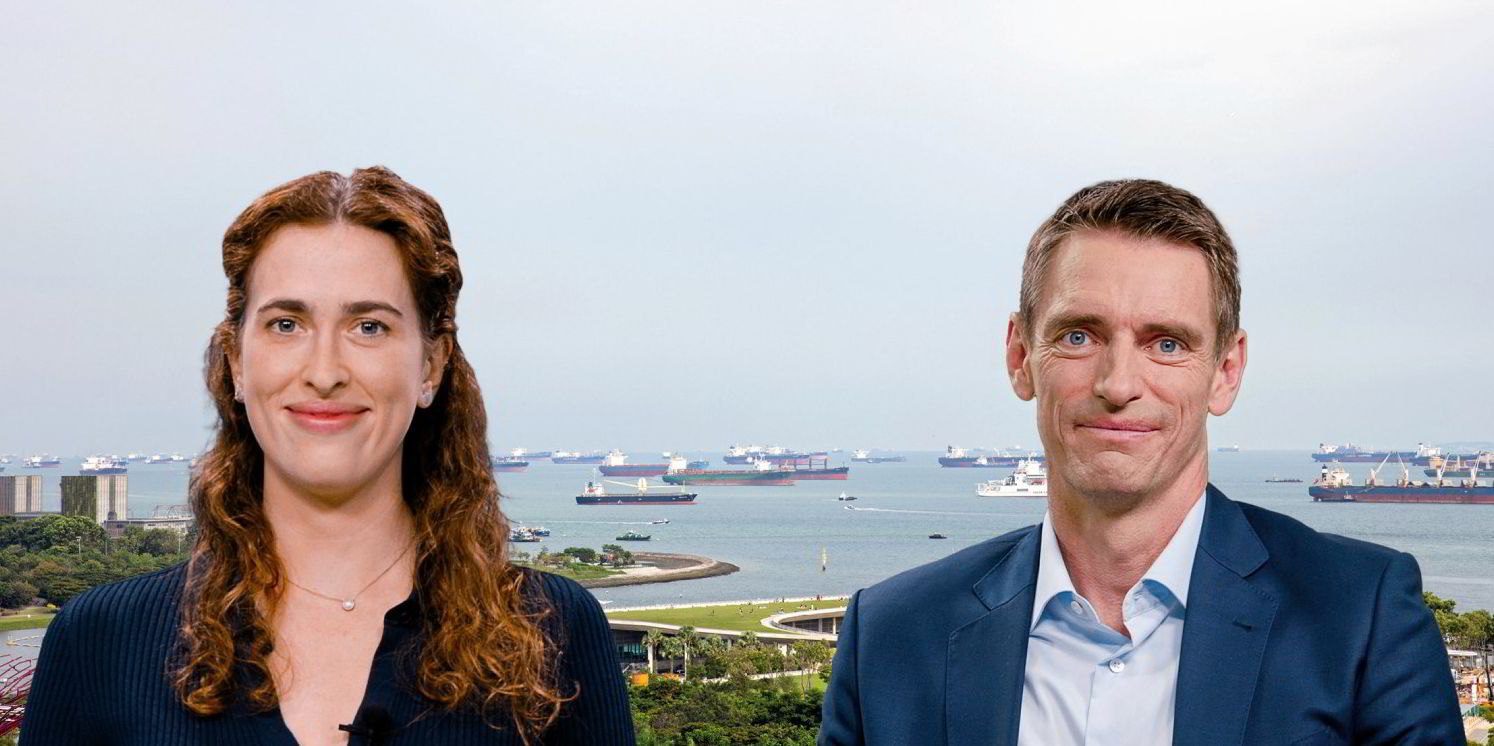Trafigura believes green e-fuels produced from renewable energy could be produced in abundance in the developing countries of the Global South.
But the trading giant has a major caveat: unlocking the potential in the developing world to produce these fuels will require the International Maritime Organization to set a global carbon price.
The company expressed its optimistic view of e-fuel production in a white paper issued before an IMO working group meeting next week.
The meeting is a key milestone before the United Nations shipping regulator is scheduled to vote “no” to new decarbonisation targets in July and narrow its options for taxing greenhouse gas emissions.

Margaux Moore, head of energy transition research & investments at Trafigura, and global fuel decarbonisation head Rasmus Bach Nielsen estimated that the Global South could produce 4,000 exajoules of competitively priced green hydrogen.
Yet shipping’s demand for e-fuels would amount to just 20 to 40 exajoules.
“With the right policy settings, we see large potential for producing two of these fuels — green ammonia and green methanol — in countries with access to abundant solar energy, wind power and land,” they wrote in the report.
“At the same time, we see significant potential demand for low-emission fuels by the end of the decade, which should give shipbuilders, owners and project developers the confidence they need to invest in shipping decarbonisation.”
But Trafigura, which has been a leading voice for the IMO to impose a carbon tax on shipping, is looking for action by the global regulator.
Challenging targets
“This potential, which could provide developing countries with the chance to develop new export industries and create thousands of skilled jobs, won’t be realised unless the shipping industry can agree on challenging decarbonisation targets and crucially implements a price on carbon,” Moore and Bach Nielsen wrote.
Trafigura hopes that at the July meeting of the Marine Environment Protection Committee, the IMO will adopt a science-based target aiming, ideally, for zero greenhouse gas emissions, or at least net zero, by 2050.

E-fuels: Also known as electrofuels, green e-fuels are made from renewable electricity. The synthetic fuels include green hydrogen, which is produced using electrolysis, and its derivatives such as green ammonia.
Global South: The term is often used to refer to developing countries in Latin America, Asia, Africa and Oceania. In its white paper, Trafigura defines it as “developing or industrialising countries and regions” below the so-called Brandt Line that generally follows the latitude of 30 degrees north but excludes developed countries in Oceania.
CO2 equivalent emissions: Emissions of all greenhouse gas emissions calculated based using the warming potential of carbon dioxide.
“It must also agree and implement a price on carbon by 2025,” said Bach Nielsen. “That’s an absolute must to give shipowners the confidence to order new vessels capable of running on low-emission fuels.”
In the white paper, Trafigura does not specify a price. But in a 2020 report, it said a price of $250 to $300 per tonne of CO2-equivalent emissions would be appropriate.
Moore said decarbonisation must be done in a global way, rather than as a two-tier transition in which developed countries that can afford to pay incentivise green fuels and connect to each other with green corridors.
“In order to decarbonise in a meaningful way and on time, we need global carbon pricing, we need to involve the Global South and we need to decarbonise all shipping routes,” she told TradeWinds.
Asked what other measures are needed to spur green fuel production, Bach Nielsen said the IMO needs to adopt emissions accounting that factors in the full life cycle of fuels, 2030 decarbonisation targets and global fuel standards.
Under the IMO’s current work plan, it is scheduled to narrow down options this summer for a basket of medium-term measures. Those would include putting a price on carbon, with discussions gravitating towards a carbon levy rather than a cap-and-trade scheme similar to the European Union Emissions Trading System that will include shipping from next year.
The Trafigura paper addressed concerns frequently raised in shipping over whether enough renewable energy capacity can be built for e-fuels to be produced in sufficient quantities to decarbonise shipping.
The company estimated that e-fuel production in the Global South could be more competitive, with the cost at $750 per tonne of green hydrogen, compared with $1,500 per tonne in Europe.
More competitive
The west coast of South America, Oceania, the Middle East and Africa offer the highest potential, with sub-Saharan Africa alone presenting the potential to produce up to 1,923 exajoules of competitively priced green hydrogen each year.
Some IMO delegations from nations in the Global South have been resistant to tougher targets and a carbon price, fearing that their economies will be adversely affected and developed nations will get a leg-up in green shipping.
But the document’s authors highlighted that the Global South is also made up of climate-vulnerable nations, and green fuel production represents an opportunity for their economies.
Some developing countries have been seeing these opportunities.
The white paper included comments from Dumisani Theophelus Ntuli, chief director of maritime transport policy & legislation for South Africa’s Department of Transport, claiming that his country is ready to make a sizeable contribution to e-fuel production.
“There is a fast-developing consensus that the only way to significantly reduce emissions from deepsea maritime shipping is by changing from fossil-based bunker fuels to synthetic fuels derived from green hydrogen,” he wrote.(Copyright)



